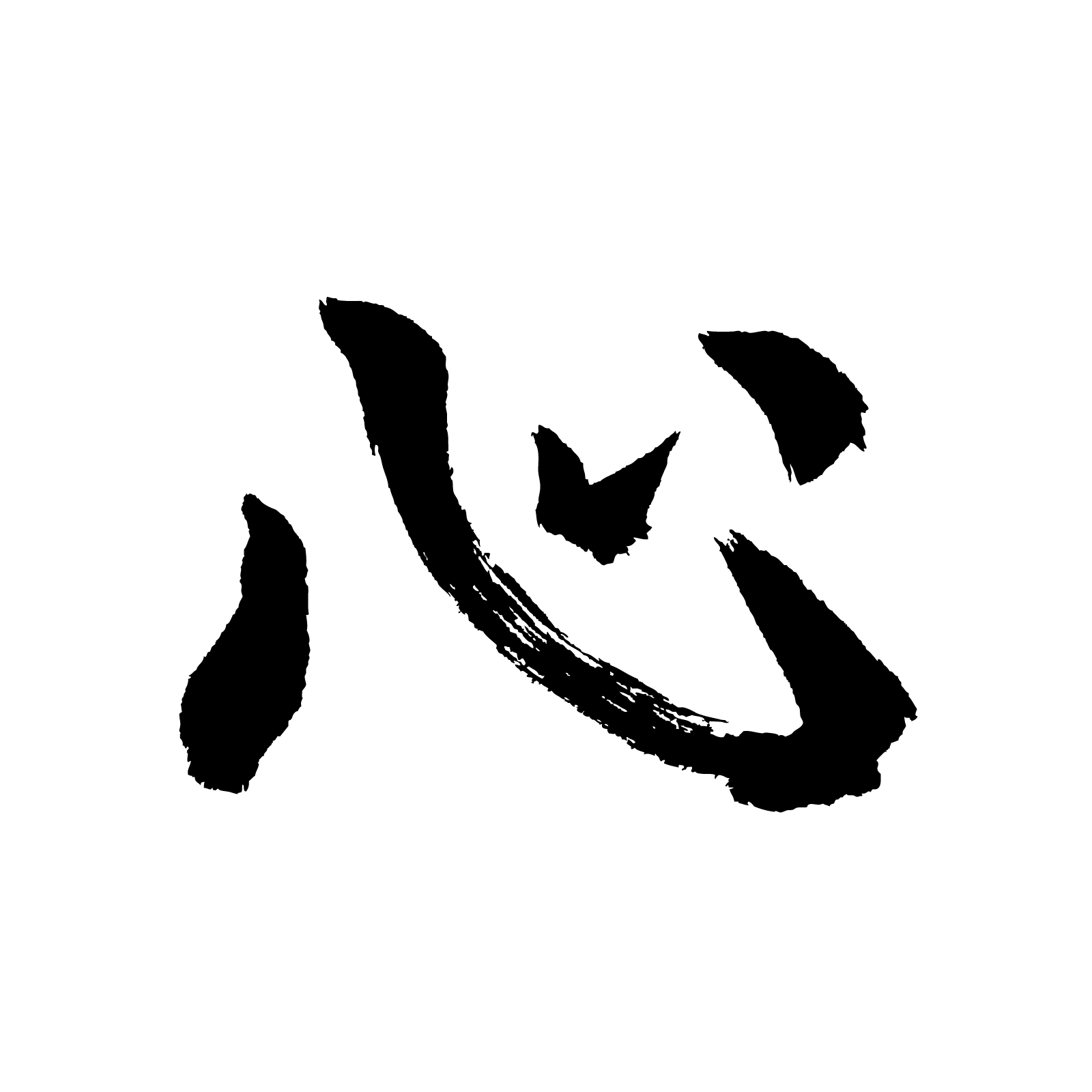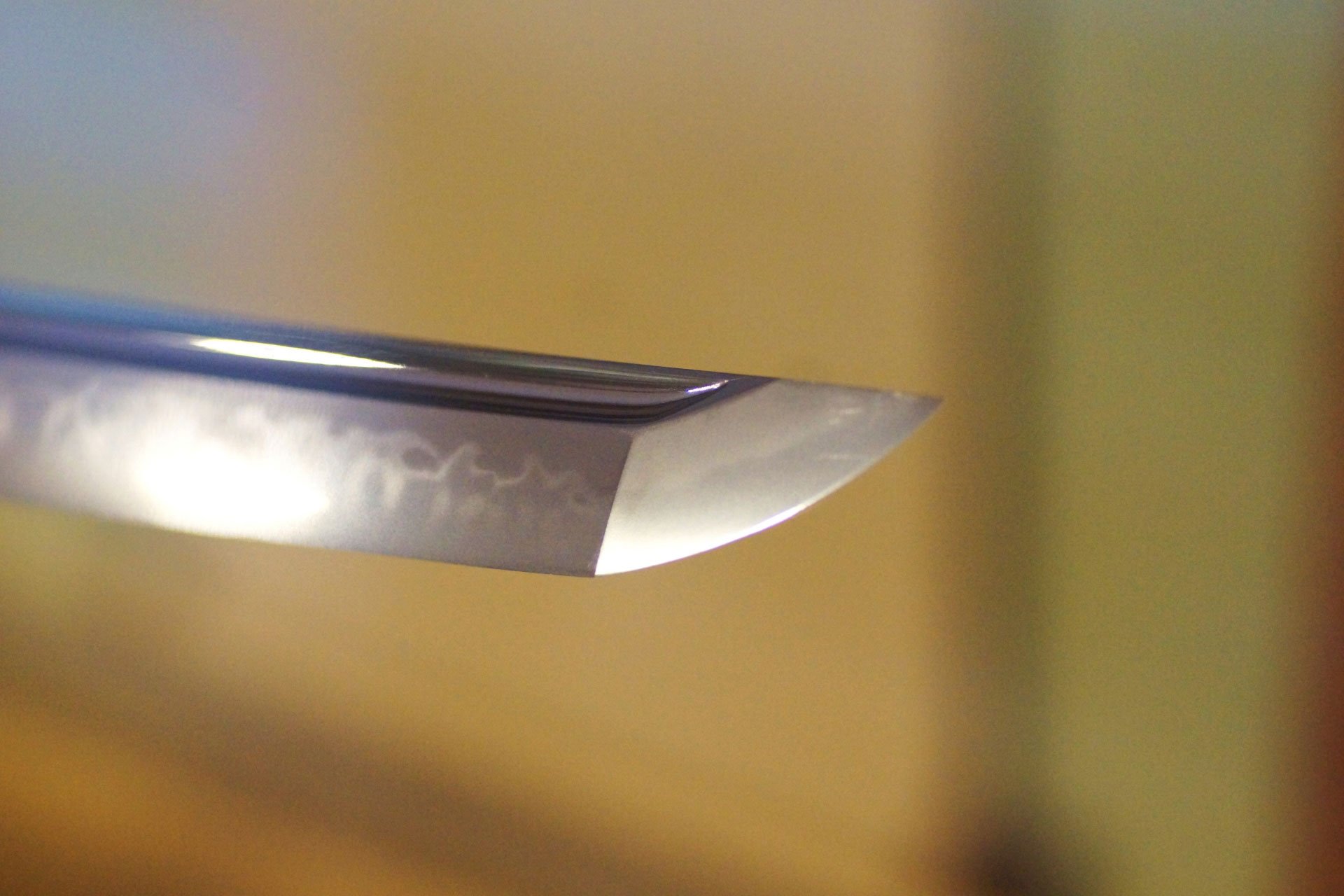You Got It!
What is Kokoro?: The Concept of Kokoro
"Strike Your Opponent's Kokoro with Your Kokoro"
What is kokoro? If you understand the concept of kokoro, your understanding of kendo will dramatically increase.
We use the word, kokoro, all the time in Japanese culture.
So understanding the concept of kokoro will help you with improving Kendo and understanding Japanese culture.
*There is a lecture video on the concept of kokoro at the bottom of the page. Together with this article and the video, I hope you will have better understandings in the concept of kokoro.
Understanding of the Ultimate Goal of Kendo
The reason I decided to explain what kokoro meetings is to explain the ultimate goal of kendo.
 kanji for kokoro
kanji for kokoroI have tried to explain what it is several times to my students in the past, but it is very very hard to explain if you don’t understand what kokoro is. So I decided to spend time dedicated to explain the concept to my students.
If you have done some martial arts, you probably heard this saying, “Shin, Gi, Tai”. In Japanese, this is how we write; 心技体.
The first character is a character for kokoro. And the second one is for technique and the last one is for body. The last two characters are very straightforward and these translations are appropriate.
However, when kokoro is translated into English, it is usually translated as “mind”. Now this is not a wrong translation at all. But if you know the concept of kokoro, you would understand it better.
So what is kokoro, then?
Yes, in means mind. But as I said, it is not only “mind”. The mind is psychological and it includes thoughts as well.
It originally means heart. If you hear “the hearts of the city”, what do you think it means? Yes, in means “the center of the city”. The heart is very important in our body. It is the center of our body in a sense that if the heart stops we die.
We have the word “brain dead”. What is it? The brain is dead but people are still alive. I am not going to get into an argument on whether or not one is considered as dead/alive if the brain is dead. What I meant is even if their brain is dead, they’re still breathing.
But if your heart stops, we don’t call it “heart dead”. We call it “dead”. There is why it is very important to relate kokoro to our body. They are inseparable.
Let’s List More Meanings of Kokoro

When you hear a good story that makes you feel warm, what kind of expression would you use? One word I could think of was “heartwarming”.
In the video I used “hearful” but apparently it is a Japanese English word. So when you are touched by a good story, you feel warm in your heart. We all know that we are not talking about anatomical heart here. We are talking about our emotions/feelings.
I am sure in kendo training you are told to give everything you have once, twice or more. What do you think it means? Do they give their physical strength that they have?
Now why do you think we shout before, during and after our strike? We are trying to encourage ourselves. We are trying to charge ourselves up so we can bravely confront our opponent standing right in front of us. We need really a strong heart, i.e. fighting spirit. And also I would like to add soul here.
Kokoro are mind, emotions, feelings, spirit and soul. I must add mentality as well. And if you know Japanese, you may think there are different terms for each word. Yes, it is true we have different Japanese terms for each word.
The term, kokoro, can have various meanings depending on how we use it. For example, when I say, “your kokoro is dirty”, what do you think it means? Does it make sense if I say your mind is dirty? It means you are selfish and do not think about others and apply very dirty tricks to gain whatever you want.
- What do you think it means if I tell you to keep your kokoro stable? It means “stay focused and calm”.
- “Strong kokoro” means “strong mentality”.
- “Kokoro is weak“means your mental strength is weak.
- When your kokoro dances, you are excited.
- When you change your kokoro, it is very close to “changing your mind”, which means you are changing your thoughts.
- Put your kokoro in something means you put your soul, feelings and thoughts in it.
- Stop fighting because you kokoro is snapped in half, it means you’ve lost your fighting spirit.
I think I gave you enough information about how the Japanese uses the term, kokoro. And I hope these examples help you to understand the concept of kokoro.
Here’s what I wanted to talk about.
Strike You Opponent’s Kokoro With Your Kokoro

This is the ultimate goal of kendo. We do hit each other with shinai but that is not the final goal. So what do you think it means?
I have given you all the examples I could think of above, so you probably know what it means.
Your kokoro is yourself. You must fight your opponent with the best of yourself at the moment of fighting. Up until now you have experienced a lot not only in kendo but also in your life. That is you.
I’m not talking about you only in kendo. You must reach out your opponent showing your quality as a human; your experience in kendo and your life, your personality, your characteristics.
Before
I conclude this article, I will tell you this famous story in kendo.
Two 9-dan sensei were fighting. One sensei suddenly
stopped fighting, bowed to his opponent and said, “I have lost. You won.”
 Appreciation in Kanji
Appreciation in KanjiWhat do you think happened?
The other sensei took his center. The other sensei didn’t even have to execute a strike to hit this sensei. His kokoro was already hit.
Why do you think we hit each other in kendo? It is because we are telling each other our weaknesses. We have to be hit to realize our weaknesses. If you were perfect no one could strike you, couldn’t they?
In daily life, if you do something wrong or socially unacceptable, someone will tell you that you are doing wrong.
If you know what you have done wrong or your weaknesses and you can correct them all by yourself, you are a perfect human being. You don’t need anyone to tell you what to do.
Same in kendo. Even if you were taken your center, if you couldn’t notice that, you wouldn’t know the fact your center was already taken. That is why your opponent has to strike you. So you know your center was taken and you had an opening. In other words…
Your
kokoro was moved, shook and defeated by your opponent.
No one likes to lose. No one likes to get hit. But you have to, if you care about them and think about their future growth, even if you do not want to strike your opponent.
That’s exactly the same as what happens in our daily life. We have to tell people if they are doing something wrong, even when we don’t really want to.
Let’s go back to the 9-dan sensei example. It is simple. Since his level is very high, he knew immediately what he did wrong by his opponent taking center.
There are a lot of situations in kendo where you don’t get hit but your opponent catches you off guard. Please do not think that it is okay because you didn’t get hit.
You have to pay attention to the fact that your opponent caught you off guard. This is more important than actually getting hit or not. It is because…
Your kokoro was moved, shook and defeated by your opponent.
And if you can think that your opponent’s strike was really good and you were impressed and felt it in your heart (kokoro) even when they did not get your target, you must appreciate your opponent to have shown you such a wonderful strike.

